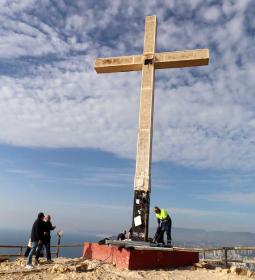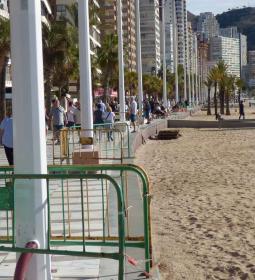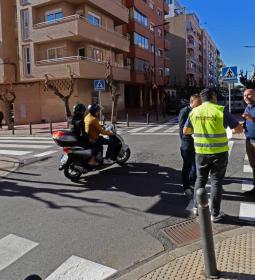The objective is to renew all the deteriorated elements and adapt the installation to the Energy Efficiency Regulation
Benidorm approves the renovation project for public lighting and the catenary of Paseo de Levante (Phase I) for 1.9 million euros

The Local Government Board (JGL) of Benidorm City Council has approved the project to renew the public lighting and catenary on Paseo de Levante (Phase I) worth 1,972,119.45 euros, as stated in the proposal made by the Councilor for Urban Scene, José Ramón González de Zárate.
As Mayor Toni Pérez recalled today, the construction of Paseo Marítimo de Levante dates from the 90s of the last century "and the public lighting installations and the catenary, one of the distinctive signs of Benidorm, have already reached the end of their useful life".
The objective of this work is to renew all the deteriorated elements and "adapt the exterior lighting infrastructures to the Energy Efficiency Regulations within our continuous commitment to carry out sustainable and efficient energy management that allows us to reduce consumption, lower the bill of electricity and use cleaner and less polluting energies”.
On November 11, the Provincial Coastal Service decided to authorize the execution of the project, which already has all the relevant favourable reports from the City Council.
The current lampposts and points of light present defects such as the presence of corrosion, cracks and fissures in the anchors, the catenary cables have clear signs of oxidation and the electrical connection boxes of the luminaires are not in the correct location, which increases the susceptibility to breakdowns due to the entry of sand into the connections.
The intention of the City Council, said the mayor, is to incorporate a new type of lamp "that will allow a better integration of the 'smart' elements, which facilitate the transition to LED technology and enable the installation of the electrical system on the surface". In this way, some problems that existed on the seafront and in lighting are solved "and we anticipate future needs, always taking care of the aesthetics and image of one of the busiest places in the city".
For the streetlights, a dodecagonal model has been chosen that has more interior space so that in addition to including the wiring of the luminaire itself and the catenary, it can also house the channels of the 'smart' elements. "In this model, access to the pipes is easier, so possible repairs are made easier," Pérez specified.
The execution of the project will not imply a significant alteration of the number of points, columns or luminaires already established, since their current location is respected as much as possible. The renovation of the control centres is also contemplated to improve the safety and reliability of the public lighting installations and the necessary electrical protections will be replaced.
The new catenary luminaires, the mayor explained, "consist of led projectors for exteriors, visible in daylight, and capable of creating dynamic effects in the area where they are installed". Therefore, he continued, "it has been planned the implementation of a system that will allow monitoring, programming and controlling the lighting of Paseo de Levante catenary, being able to create dynamic scenes based on colours, intensities and contrasts”.
The term foreseen for the execution of the works is five months once the layout act has been awarded and signed.




